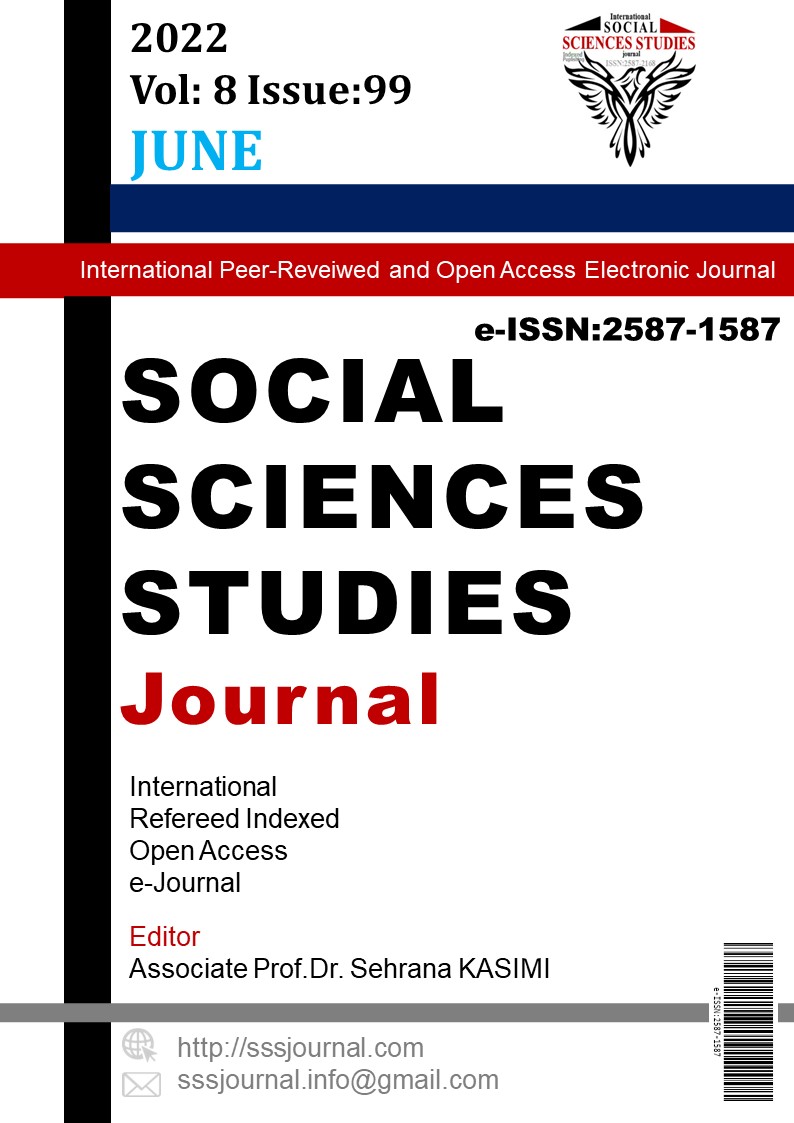Author :
Abstract
Türk el sanatlarının en zengin ürünlerinden birisi de el dokumalarıdır. Anadolu’nun zengin kültürü bunu ortaya koymaktadır. Anadolu’nun her yöresinde gelenek ve göreneklere bağlı kalınarak dokuma sanatı günümüze ulaşmıştır. İnsanların en önemli gereksinimlerinden olan giysilerin üretimini sağlayan tekstil ve moda sektörü insan ve çevre sağlığını düşünmesi sürdürülebilir tekstil tasarımında doğal liflere olan talebi arttırmıştır. Kenevir, insanlık tarihi boyunca kullanılmış en eski lif bitkilerinden birisidir.
Tekstil ürünlerinin üretiminde kullanılan keten, pamuk, yün ve ipek gibi geleneksel kaynakların yetersiz kalması, doğal elyaf araştırmalarının yapılmasını sağlamıştır. Yörede yetişmekte olan kenevir bitkisi ülkemizde ilaç ve diğer bağımlılık yapan maddelerin yapımında kullanılmakta olduğundan yetiştiriciliği sınırlandırılmış, kenevir dokumaların üretimini azaltmıştır.
Araştırmada, geleneksel dokumalardan kenevir dokumacılığının tarihsel gelişiminin yanı sıra, toprağa ekiminden, hasatına, iplik haline getirilip dokumanın elde edilmesine kadar yapım aşamaları araştırılmıştır. 1960 yılında kenevir üretiminin yasaklanması ile yok olmaya yüz tutan kenevir üretiminin yeniden yasallaşması eski geleneği gün yüzüne çıkarmıştır. Özellikle Rize kentinin “Çayeli” ilçesinde bulunan kenevir üretiminin devam ettirildiği dokuma atölyelerinde dokunan “Kenevir Dokumaları” incelenmiştir. Araştırma süresince elde edilen veriler, usta öğreticiler ile yapılan görüşmeler sonucunda elde edilmiş, aynı zamanda konuya paralel olan yazılı ve görsel kaynaklar ile desteklenmiştir.
Keywords
Abstract
One of the richest products of Turkish handicrafts is hand weaving. The rich culture of Anatolia reveals this. The art of weaving has survived to the present day by adhering to the traditions and customs in every region of Anatolia. The textile and fashion sector, which provides the production of clothes, which is one of the most important needs of people, has increased the demand for natural fibers in sustainable textile design, considering human and environmental health. One of the oldest fiber plants used throughout human history is hemp.
The inadequacy of traditional resources such as cotton, wool, silk and linen used in textile products led to natural fiber research. Since the cannabis plant grown in the region is used in the production of drugs and other addictive substances in our country, its cultivation was limited and the production of hemp weavings decreased.
In the research, besides the historical development of hemp weaving from traditional weaving, the stages of production from planting to harvesting, turning into yarn and obtaining weaving were investigated. With the prohibition of hemp production in 1960, the re-legalization of hemp production, which was on the verge of extinction, brought the old tradition to light. In particular, “Hemp Weavings” woven in the weaving workshops where hemp production continues in the “Çayeli” district of the city of Rize were examined. The data obtained during the research were obtained as a result of interviews with master trainers, and at the same time, they were supported by written and visual sources parallel to the subject.
Keywords
- Acar, M. & Dönmez, A. (2016). Kenevire Farklı Bir Bakış, 2. Ulusal Biyoyakıtlar Sempozyumu Bildiriler Kitabı,
- Acar, M. & Dönmez, A. (2016). Kenevire Farklı Bir Bakış, 2. Ulusal Biyoyakıtlar Sempozyumu Bildiriler Kitabı, 27-30 Eylül, 2016, Samsun, Türkiye, 265-270
- Akpınar, D. & Nizamoğlu, A. (2019). Osmanlı’dan Cumhuriyet’e Kenevir Üretimi Turkish Studies Social Sciences Volume 14 Issue 4.
- Aytaç, Ç. (1982). El Dokumacılığı, Milli Eğitim Basımevi, İstanbul.
- Cebeci, T.C. (2013). Ekolojik Tekstillerin Moda Tasarımı Üzerine Etkileri, Sanatta Yeterlilik Tezi, İstanbul. Dölen, E. (1992). Tekstil Tarihi, Marmara Üniversitesi. Teknik Eğitim Fakültesi Matbaası, İstanbul.
- Eser, S.; Dalgın, T. & Çeken, H. (2010). Sürdürülebilir Kültür Turizmi: Efes Örneği, Ege Coğrafya Dergisi, S. 19 (2), s. 27-34.
- Gedik, G. & Avinç, O.O., Yavaş, A. (2010). Kenevir Lifinin Özellikleri ve Tekstil Endüstrisinde. Kullanımıyla Sağladığı Avantajlar, Teknolojik Araştırmalar, Tekstil Teknolojileri Elektronik Dergisi, Sayı: 4, 39-48.
- Gürcüm, H.B. (2010). Tekstil Malzeme Bilgisi, Güncel Yayıncılık, İstanbul
- Harmancıoğlu, M. & Yazıcıoğlu, G. 1979. Bitkisel Lifler- İzmir
- İmer, Z. (1999). Sayısız Özellikleriyle Göze Çarpan Bir Doğal Elyaf Kendirin Dünyada ve Türkiye’de Geçmişi ve Bugünü – Tekstil ve Konfeksiyon 6
- Kostic, M.; Pejic, B. & Skundric, P. (2008). Quality of Chemically Modified Hemp Fibers – Bioresource Technology 99 94–99.
- Kurtuldu, E. & İşmal, Ö.E. (2019). Sürdürülebilir Tekstil Üretim Ve Tasarımında Yeniden Değer Kazanan Lif: Kenevir, SDÜ ART-E Güzel Sanatlar Fakültesi Sanat Dergisi, Cilt:12 Sayı:24
- Ozmehmet, E. 2008. Dünyada Ve Türkiye Sürdürülebilir Kalkınma Yaklaşımları, Journal of Yaşar University, Cilt 3 (12).
- Saatçioğlu, K. (2016). Geleneksel Bir Türk El Dokuması: Rize Bezi (Feretiko), Cilt 0, Sayı 25, 93 – 105.
- Türkmen, N. (2012). Tekstil ve Moda Tasarımı Açısından Sürdürülebilirlik ve Dönüşüm. T.C. Mimar Sinan Güzel Sanatlar Üniversitesi Sosyal Bilimler Enstitüsü, Sanatta Yeterlilik Tezi, İstanbul.
- Ulaş, E. (2018). Gerçek Köye Dönüş Projesi: Kenevir. Hatice Bahtiyar (Editör), Hiperlink Yayınları, İstanbul.
- Yağan, Ş.Y. (1978). Türk El Dokumacılığı. Türkiye İş Bankası Kültür Yayınları İstanbul 1. Baskı Apa Ofset Basımevi
- Yavuz, A. (2010). Sürdürülebilirlik Kavramı Ve İşletmeler Açısından Sürdürülebilir Üretim Stratejileri, Mustafa Kemal University Journal of Social Sciences Institute, Cilt 7 (14)
